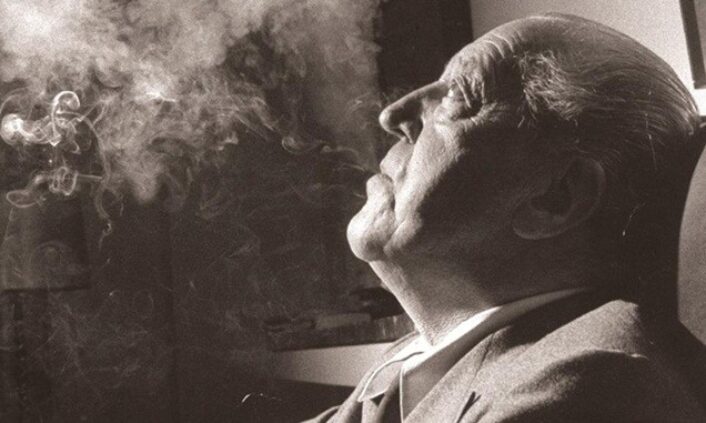Ludwig Mies van der Rohe and Alexander Calder were very different, yet their work in Chicago compliments each other perfectly. Maria Ludwig Michael Mies grew up in Germany, where he worked at his father’s stone carving shop. He changed his name to Ludwig Mies van der Rohe in an attempt to transform himself from a tradesman’s son into an architect, without a college education. Mies’ transformation was successful, he was the last director of the Bauhaus before emigrating to the United States to serve as the head of the architecture department at the Illinois Institute of Technology.
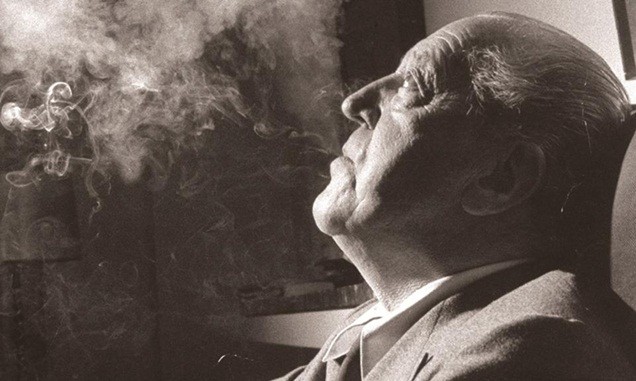
Mies van der Rohe
Image courtesy of Architectural Review.
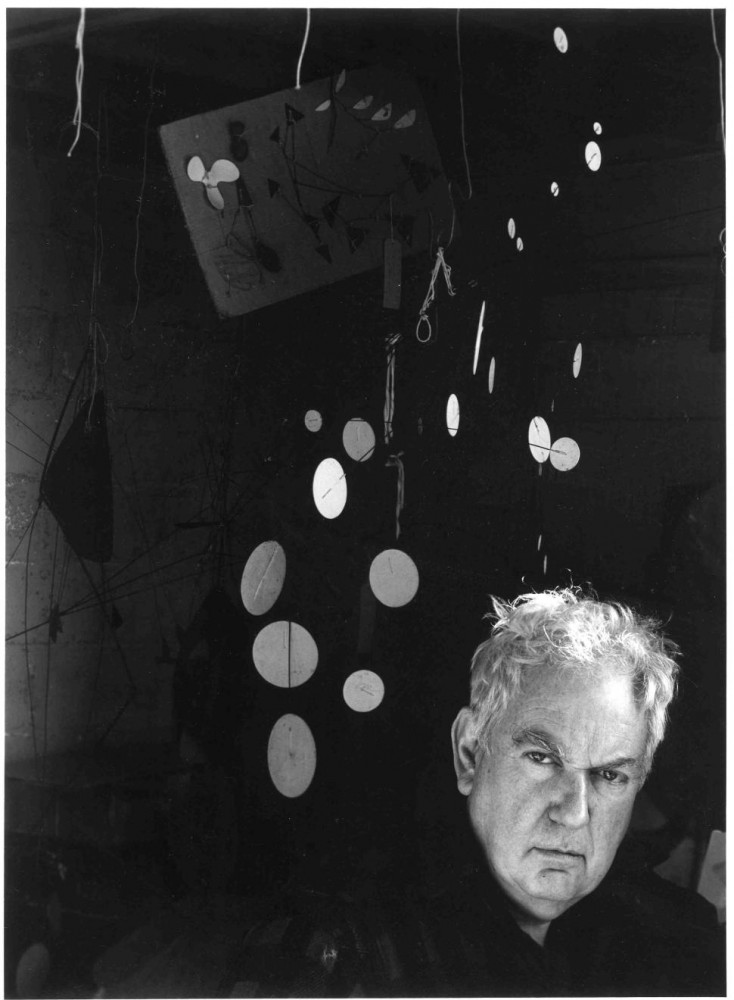
Alexander Calder was 12 years younger than Mies. He was the son and grandson of sculptors and his mother was an artist. He tried to rebel from his family trade by going to school to become a mechanical engineer, before eventually studying art. He moved to Paris and started out making toys. He created a miniature circus, the Cirque Calder, which he would use to hold performances, mimicking a real circus.
Above: Alexander Calder with one of his mobiles.
Image Courtesy of The Red List.
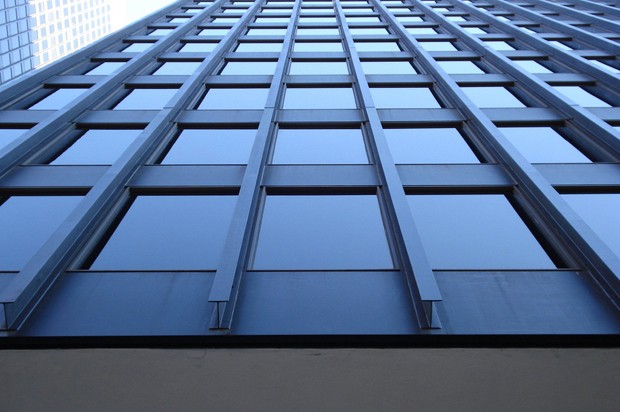
Mies became famous for his modernist designs. His glass and steel skyscrapers revolutionized how we looked at the Chicago skyline. Calder became famous for Mobiles, an art form he created, consisting of kinetic sculptures that moved based on air currents.
The Chicago Federal Center designed by Ludwig Mies van der Rohe.
Image Courtesy of Timothy Brown via Flickr.
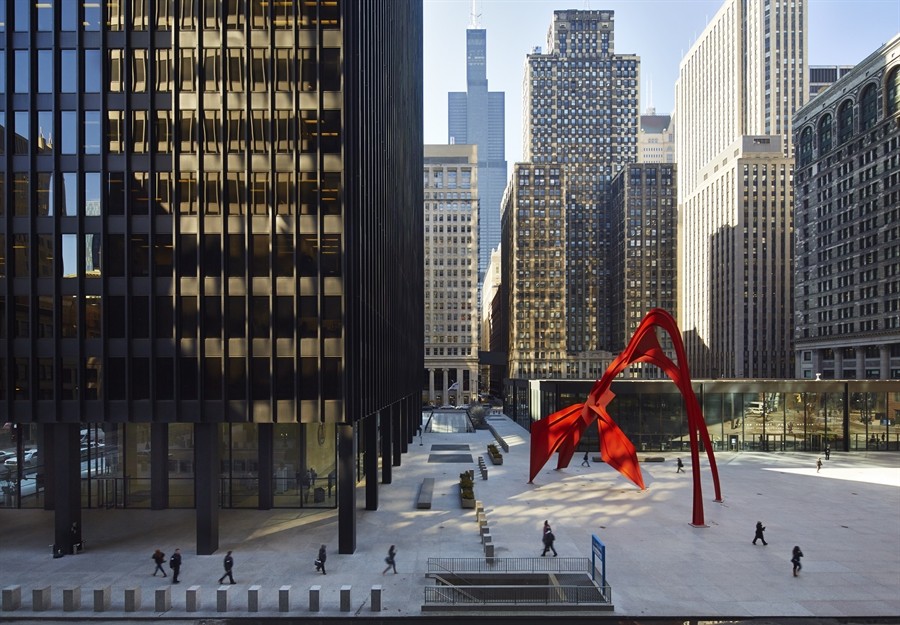
The Federal Center in Chicago is made up of three buildings designed by Mies, The Kluczynski FederalBuilding, the Dirksen Federal Building and the US Post Office. All three buildings are designed and built on the same 28’ grid. Everything follows the grid. The joints in the granite pavers meet the mullions on the buildings. The glass and steel create a looking as striking in black and white as it is in color. Miesian architecture provides the perfect backdrop for public art.
The Flamingo was a Stabile designed by Calder. Its vermilion color has been renamed “Calder red,” and sets the sculpture off from its surrounding buildings. Its arcs are in direct contrast to Mies’ strict grid.
The styles are completely opposite yet complement each other perfectly, playing strengths off of each other, to create one of the most compelling plazas in modern urban design.
Above: The Flamingo in the Federal Center.
Image Courtesy of AIA Chicago.
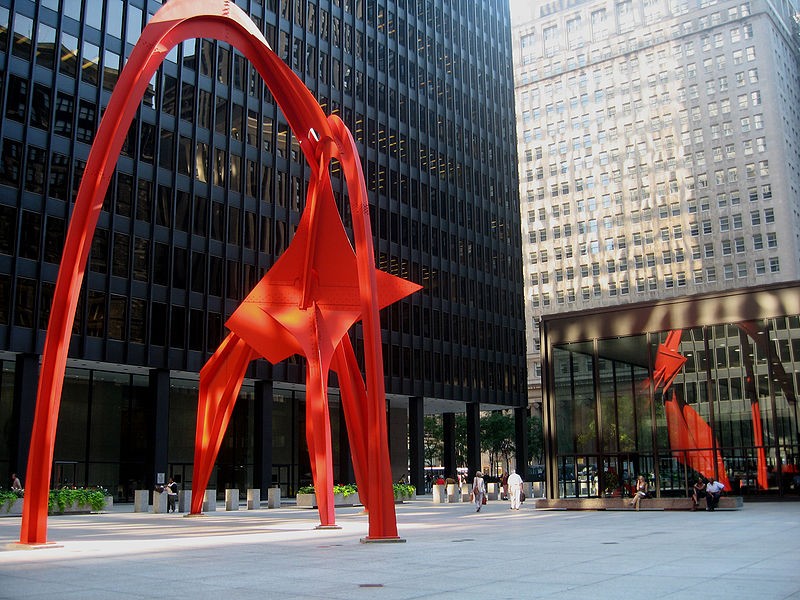
The Flamingo was a Stabile designed by Calder. Its vermilion color has been renamed “Calder red,” and sets the sculpture off from its surrounding buildings. Its arcs are in direct contrast to Mies’ strict grid.
The styles are completely opposite yet complement each other perfectly, playing strengths off of each other, to create one of the most compelling plazas in modern urban design.
The Flamingo in the Federal Center.
Image Courtesy of Alexander Calder Blog.
